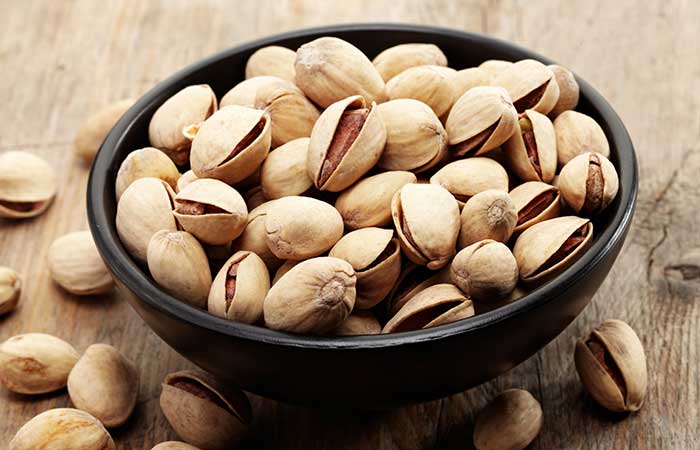All about almonds; Cultivation, Nutritions, benefits and risks

Almonds are indeed a popular and versatile tree nut used in various culinary applications around the world. Here are some key points about almonds:
Botanical Description: The almond tree, scientifically known as Prunus dulcis, belongs to the Rosaceae family. It produces stone fruits containing a single seed, commonly known as the almond nut.
Native Range: Almonds are native to southwestern Asia.
- Cultivation Areas: Almond trees thrive in Mediterranean climates, primarily between 28° and 48° N and between 20° and 40° S. California is a major producer of almonds, accounting for nearly 80 percent of the world's supply.
- Edible Seed: The edible part of the almond tree is the seed, which is enclosed in a hard shell.
- Consumption: Almonds are consumed in various ways. They can be eaten raw, blanched (briefly boiled and then peeled), or roasted. Almonds are commonly used in baking, confectionery, and as a standalone snack.
- Culinary Uses: Almonds have a wide range of culinary applications. In Europe, they are used to make marzipan, a sweet paste often used in pastries and candy. In Asian cuisines, almonds are commonly used in dishes containing meat, poultry, fish, and vegetarian ingredients.
- Nutritional Value: Almonds are a nutrient-dense food. They are high in protein and healthy fats, making them a popular choice among health-conscious individuals. Additionally, almonds provide small amounts of essential minerals such as iron, calcium, and phosphorus, as well as vitamins A, B complex, and E.
- Health Benefits: Almonds have been associated with several health benefits. Their high nutrient content can contribute to improved heart health, weight management, and better overall nutrition.
- Almond Milk: Almond milk, a plant-based alternative to cow's milk, is gaining popularity as a lactose-free and vegan-friendly beverage option.
- Cultivation: Almonds are cultivated on almond trees, which require proper care and attention to ensure successful harvests.
Due to their rich nutritional profile and versatility in culinary applications, almonds continue to be a popular and widely consumed nut globally.
Physical Description
Physical description of almond trees:
- Deciduous Nature: Almond trees are deciduous, meaning they shed their leaves during a certain period each year.
- Hardy Dormancy: Almond trees have a hardy dormancy period, which allows them to withstand colder temperatures during winter.
- Size: Almond trees typically grow to a height of 3–4.5 meters (10–15 feet). This makes them relatively small to medium-sized trees.
- Flowers: Almond trees are known for their strikingly beautiful flowers. The flowers are fragrant, five-petaled, and appear in shades of light pink to white. They bloom from late January to early April in regions north of the Equator.
- Pollination: The flowers of almond trees are self-incompatible, meaning they cannot pollinate themselves. They require the assistance of insect pollinators, such as bees, to facilitate cross-pollination with other almond cultivars.
- Fruit (Drupe): Almonds produce fruits known as drupes. When the fruit is young, it resembles a peach, but as it matures, it undergoes changes. The leathery outer covering, called the hull, splits open, curls outward, and eventually discharges the almond seed, which is the pit inside the fruit.
- Seed Classification: Although commonly referred to as nuts, almonds are not true nuts in botanical terms. They are actually seeds enclosed in a hard fruit covering (the drupe). This makes them a type of seed rather than a true nut (which is a specific type of dry fruit).
Almond trees are not only valued for their delicious and versatile seeds but also appreciated for their beauty when in bloom, making them a popular choice in ornamental gardens and landscapes.
Almond Cultivation
Almond cultivation has evolved significantly over time, with modern practices being more industrialized compared to traditional methods. Here are some key points about almond cultivation:
- Favorable Regions: Sweet almonds are extensively cultivated in regions with favorable climates, such as Mediterranean climates. However, almond nut crops are uncertain in areas where frost is likely to occur during the flowering period.
- Almond Varieties: There are numerous almond varieties cultivated worldwide. In California, more than 25 types of almonds are grown, while Marcona and Valencia almonds are associated with Spain, and Ferragnes almonds are imported from Greece.
- Old World Cultivation: In the past, almond cultivation in the Old World was characterized by small plantings primarily for family use. Almond trees were often interplanted with other crops, and individual trees varied in age, condition, and bearing capacity. Cultivation relied heavily on hand labor with crude implements.
- Modern Almond Cultivation: Modern almond growers tend to have vast orchards, with trees of the same age planted in rows. This industrial approach allows for more efficient management and harvesting.
- Mechanization: Mechanized tree shakers are commonly used in modern almond orchards to expedite harvesting. These machines shake the almond trees, causing the nuts to fall to the ground for collection.
- Pollination: Almond trees are not self-pollinating, so they require pollinators, such as honeybees, for cross-pollination. In California, where a significant portion of the world's almonds are produced, the annual pollination of almond trees is the largest managed pollination event globally. Over 1.1 million beehives are brought to the state each year for this purpose.
- Threat of Colony Collapse Disorder (CCD): The almond industry faces challenges due to the threat of Colony Collapse Disorder, a phenomenon that has led to a global decline in honeybee populations. Almonds heavily depend on honeybees for pollination, and the decline of bee populations poses a risk to the multibillion-dollar almond industry.
Efforts are being made to address the challenges posed by CCD and to develop sustainable practices for almond cultivation to ensure the continued success of this economically important crop.
Sweet and Bitter
Sweet almonds (Prunus dulcis, variety dulcis) and bitter almonds (Prunus dulcis, variety amara) are two distinct varieties of almonds, each with its unique properties and uses:
Sweet Almonds:
- Edible Use: Sweet almonds are the familiar type of almonds commonly consumed as nuts. They are widely used in cooking and baking or consumed as a healthy snack.
- Almond Oil: Sweet almonds are a source of almond oil, which is popular in various culinary and cosmetic applications.
- Almond Meal: The dried and ground remains of sweet almonds after oil extraction are used to produce almond meal, which is often used in baking as a gluten-free alternative.
- Chemical Composition: Sweet almonds contain between 35 to 55 percent of fixed oil (nonvolatile oil) and feature the enzyme emulsin, which converts glucose in the presence of water.
Bitter Almonds:
- Flavoring Extracts: Bitter almonds are not suitable for direct consumption due to the presence of amygdalin, which can release prussic acid (hydrocyanic acid) when metabolized. However, the oil of bitter almonds is used in the manufacture of flavoring extracts for foods and liqueurs.
- Prussic Acid Removal: Before using bitter almond oil, prussic acid must be removed since it is toxic. The oil is processed to ensure its safe usage in flavoring applications.
- Chemical Composition: Bitter almonds also contain between 35 to 55 percent of fixed oil and have the enzyme emulsin, which converts glucose in the presence of water, similar to sweet almonds. However, they contain amygdalin in higher amounts.
It's essential to note that the presence of amygdalin in bitter almonds poses a potential health risk, as amygdalin can release toxic prussic acid when ingested. Therefore, bitter almonds should not be consumed directly, and their oil should undergo processing to remove prussic acid before use in flavoring extracts.
Sweet almonds are the preferred choice for consumption and culinary uses due to their pleasant taste and safety, while bitter almonds are used specifically in flavoring applications after prussic acid removal.
Nutrition
Almonds are highly valued for their nutritional content and health benefits. Here are some key nutritional facts about almonds:
Nutritional Content per 100 grams of Almonds:
- Calories: 579 kcal
- Protein: 21.2 grams
- Total Fat: 49.9 grams (including healthy monounsaturated and polyunsaturated fats)
- Carbohydrates: 21.7 grams (including dietary fiber and sugars)
- Dietary Fiber: 12.5 grams
- Sugars: 3.9 grams
- Calcium: 264 mg
- Iron: 3.71 mg
- Magnesium: 270 mg
- Phosphorus: 484 mg
- Potassium: 733 mg
- Vitamin E (Alpha-tocopherol): 25.63 mg
- Vitamin B-6 (Pyridoxine): 0.143 mg
Health Benefits
Health Benefits of Almonds:
Heart Health: The monounsaturated and polyunsaturated fats in almonds can help reduce LDL cholesterol levels, which may lower the risk of heart disease.
Weight Management: Almonds are high in protein and dietary fiber, which can promote satiety and help in weight management by reducing overall calorie intake.
Blood Sugar Control: The low carbohydrate content and high fiber content of almonds can help regulate blood sugar levels, making them a suitable snack option for people with diabetes.
Bone Health: Almonds are a good source of calcium, magnesium, and phosphorus, which are essential for maintaining healthy bones and teeth.
Skin and Hair Health: The vitamin E content in almonds contributes to healthy skin and hair, as it acts as an antioxidant protecting cells from damage.
Antioxidant Properties: Almonds contain antioxidants like vitamin E, which can help combat oxidative stress and reduce inflammation in the body.
Brain Health: Almonds contain riboflavin and L-carnitine, which are nutrients that can positively impact brain function and may help reduce the risk of neurodegenerative diseases.
Portion Control:
While almonds offer numerous health benefits, they are calorie-dense, so portion control is essential, especially for those watching their caloric intake.
It's worth mentioning that the nutritional values provided are approximate and can vary depending on factors such as almond variety, processing, and preparation methods. Almonds are a nutritious and versatile addition to a balanced diet and can be enjoyed as a healthy snack, added to dishes, or used in various culinary applications.
Risks
While almonds offer various health benefits, there are some risks associated with their consumption, especially when certain precautions are not taken. Here are some potential risks:
- Allergies: Almonds are one of the tree nuts known to cause allergic reactions in some individuals. Allergic reactions to almonds can range from mild symptoms like itching and hives to severe reactions like difficulty breathing or anaphylaxis. Individuals with nut allergies should avoid almonds and products containing almond ingredients.
- Choking Hazard**: Whole almonds can pose a choking hazard, especially for young children or individuals who have difficulty chewing or swallowing. It's essential to consume almonds mindfully and consider slicing or chopping them for small children or those with swallowing difficulties.
- Oxalates: Almonds contain oxalates, which are naturally occurring compounds found in some plant-based foods. Oxalates can contribute to kidney stone formation in susceptible individuals. People with a history of kidney stones or those at risk of developing them may need to moderate their almond intake.
- Phytic Acid: Almonds, like other nuts and seeds, contain phytic acid, which can reduce the absorption of certain minerals, such as calcium, iron, and zinc. Soaking almonds before consumption can help reduce phytic acid levels and improve mineral absorption.
- Cyanide in Bitter Almonds: As mentioned earlier, bitter almonds contain amygdalin, which can release cyanide (prussic acid) when metabolized. Bitter almonds are not safe for direct consumption, and their oil used for flavoring purposes should undergo processing to remove prussic acid.
- Caloric Density: While almonds are nutritious, they are also calorie-dense. Overeating almonds or consuming them in large quantities can lead to an excess intake of calories, which may contribute to weight gain if not balanced with overall calorie needs.
- Aflatoxin Contamination: Almonds, like other nuts, may be susceptible to aflatoxin contamination, which is a type of mold toxin. Proper storage and handling of almonds can reduce the risk of aflatoxin exposure.
To minimize potential risks and maximize the health benefits of almonds, it's essential to consume them in moderation, especially for individuals with specific health conditions or allergies. If you have any concerns or specific health conditions, it's always a good idea to consult with a healthcare professional or a registered dietitian to determine the most suitable dietary choices for you.
Iranian Almonds
Iran is among the countries that produce almonds, and Iranian almonds are known for their quality and unique flavor. Iranian almonds are primarily grown in regions with suitable climates, such as Kerman, Yazd, and Hormozgan provinces. The country's almond production is influenced by its climate, soil conditions, and agricultural practices, contributing to the distinctive characteristics of Iranian almonds.
Characteristics of Iranian Almonds:
- Varieties: Iran cultivates various almond varieties, each with its specific attributes and flavors. Popular Iranian almond varieties include Mamra, Paper Shell, Shokofeh, and Khan-e-Hormozgan.
- Flavor and Taste: Iranian almonds are often appreciated for their natural sweetness and unique flavor profile. The climate and soil conditions in the growing regions play a role in shaping the taste of Iranian almonds.
- Cultivation Practices: Almonds in Iran are typically grown using traditional and sustainable methods, including dry farming and natural irrigation techniques.
- Uses: Iranian almonds are commonly consumed as a nutritious snack and used in various culinary applications, including desserts, confectionery, and savory dishes.
- Exports: Iran exports a significant portion of its almond production to various countries around the world. Iranian almonds are well-regarded in international markets for their quality and taste.
It's important to note that the availability and specific characteristics of Iranian almonds may vary depending on the region, harvest season, and market demand. As with any agricultural product, the quality and attributes of almonds can be influenced by factors such as growing conditions, post-harvest handling, and storage practices.
When purchasing Iranian almonds or any almonds from international sources, it's recommended to choose reputable suppliers to ensure the quality and safety of the product. Additionally, individuals with nut allergies should exercise caution and be aware of potential cross-contamination risks when consuming almonds or almond-based products.
Similar Articles
Bell peppers belong to the nightshade family (Solanaceae) and are cultivated primarily for their mild, thick-fleshed fruits. These peppers are commonly used both in salads and various cooked dishes
Raisins have a long and storied history, dating back thousands of years to ancient civilizations like Persia and Egypt. They were not only consumed as a food source but also held cultural and religious
Pistachios are indeed members of the cashew family (Anacardiaceae) and are primarily grown in dry, warm or temperate climates. The pistachio tree is believed to have originated in Iran and has been
The fig (Ficus carica) is a member of the mulberry family (Moraceae) and is known for its delicious edible fruit. The common fig is native to an area that stretches from Asiatic Turkey to northern





